In the 1960s, cars, motorways, and urban motorways were a symbol of modernity, not only in Hungary or the Eastern Bloc countries but worldwide. Accordingly, plans were made in Hungary for an elevated city motorway.
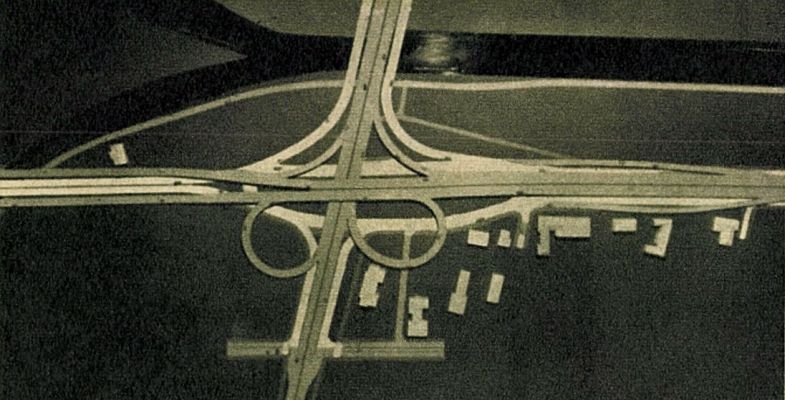
A Kacsóh Pongrác úti felüljáró terve az Autó-Motor 1967. február 6-i számában
Plans for the Kacsóh Pongrác Road overpass in the 6 February 1967 issue of Autó-Motor
On 29 August 1970, the newspaper Népszabadság wrote that a plan for the Budapest urban motorway was being prepared. The article described the idea as follows:
“The junctions and sections of the implemented city motorway will be the following: Flórián Square — Árpád Bridge — Róbert Károly Boulevard — Hungária Boulevard — Könyves Kálmán Boulevard. The road will be connected to the motorway at the planned Ostapenko statue over a planned new southern Danube bridge.
The mentioned plans relate to the construction of the Hungária Boulevard of the motorway; the route of the new motorway will surround the capital, reminiscent of the shape of a rising crescent moon.”
In fact, building expressways within the city was no new plan, as such a concept for the Pest embankment was prepared before the war, and in 1948 it was suggested that Hungária Boulevard should be widened into an expressway.
However, the political climate changed in 1950, and until 1958 a simple private person could not own a car. This restriction was lifted in 1958, and not long after, in 1961, the concept of a two-level urban motorway ring road with urban expressways was unveiled to the general public.
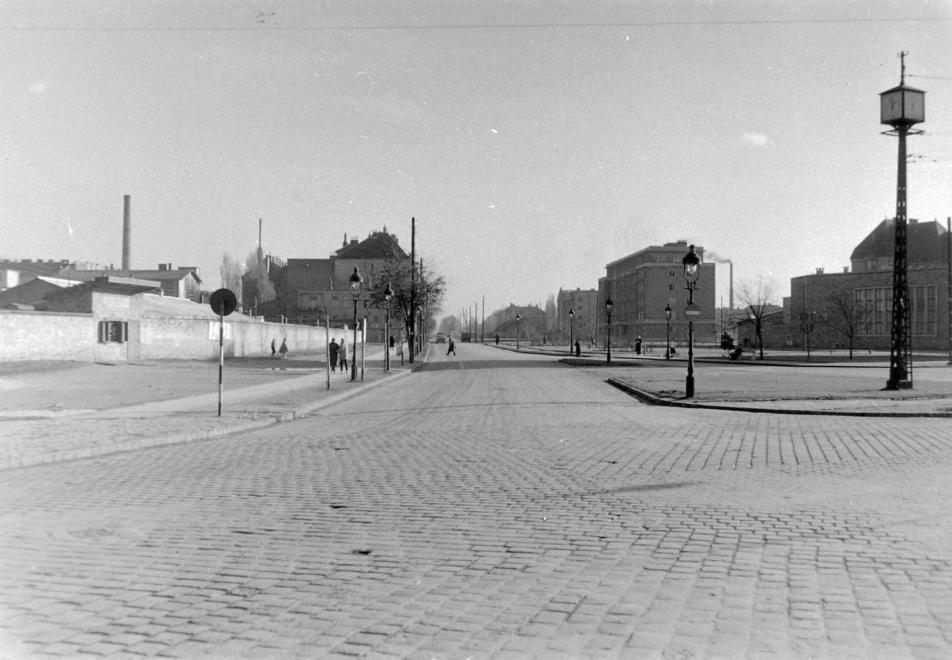
Róbert Károly Boulevard in 1958. The planned two-level section of the motorway (Photo: Fortepan/No.: 9211)
In the same period, in 1959, the decision was made that the new Erzsébet Bridge and Rákóczi Road would be an urban express route. Accordingly, it was modelled after a German motorway bridge, and the Buda bridgehead became a motorway junction. But Erzsébet Bridge was not the only element meant to bear the traffic of the expressway system.
In the 1960s, the demolition of Szabadság Bridge was floated to make room for a wider structure that would have run into a junction similar to Döbrentei Square on Gellért Square. In the city centre, road underpasses and overpasses would have been built at Astoria, Kálvin Square, and Blaha Lujza Square.
In line with this trend, in 1970–1971, Hungária Boulevard was envisioned as an extensive, multi-level urban road. The 8 January 1971 issue of Esti Hírlap presented the plans as follows:
“Two times two or three traffic lanes will be created in both directions.. These will be seperated by a 17-metre wide grass strip. A seperate expressway will run above the green divider. In the first phase of construction, the ground level main road will be developed.”
This new inner ring would have connected to roads 10 and 11 across Árpád Bridge in the north, and the bride would also have had two levels. The plan did not consider the “western” sector, i.e. the motorway would not have closed into a ring in Buda. In the south, a new bridge was designed for the site of today's Rákóczi Bridge, and a tender was announced in 1971. The first place went to a plan for a huge concrete structure, but later a different plan of a two-story steel truss bridge was presented to the press as the bridge to be built.
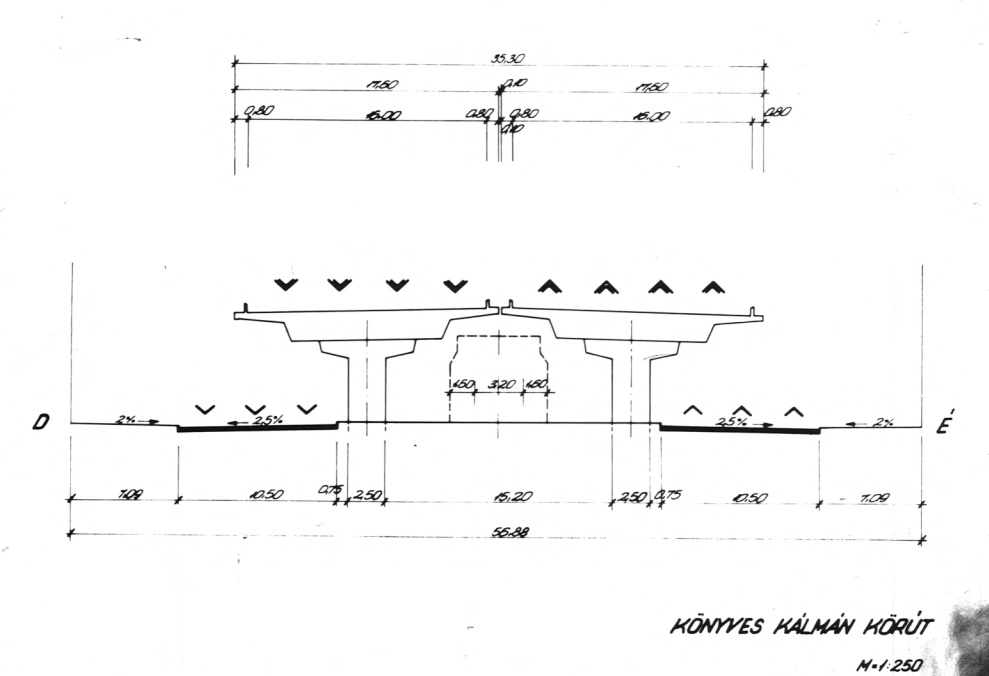
Sketch of the two-storey Kálmán Könyves Boulevard from the presentation of the Budapest City Council on 31 March 1971 (The original of the picture is white on a black background)
From here, the road would have led to the embankment and would have been connected to the western motorways at the intersection at today's Nagyszalonta Street and Budaörsi Road.
The development of the Hungária boulevard was planned to be implemented in several phases. The first was to eliminate the railway crossing at Kacsóh Pongrác Road. The plans for the overpass here were made in 1967. The 6 February 1967 issue of Auto-Motor, presented the planned junction as follows:
“The overpass crosses from Reitter Ferenc Street to Kacsóh Pongrácz Road above the rails, at a height of two storeys, with a road way 7.5 meters wide in both directions. For vehicles coming from different directions, a multi-level junction similar to the Buda bridgehead of Erzsébet Bridge will be set up later.”
Later, Hungária Boulevard itself would have been completed, as its south-Pest section was yet to be built. The long-term plans included a high-speed tram and then the raised motorway.
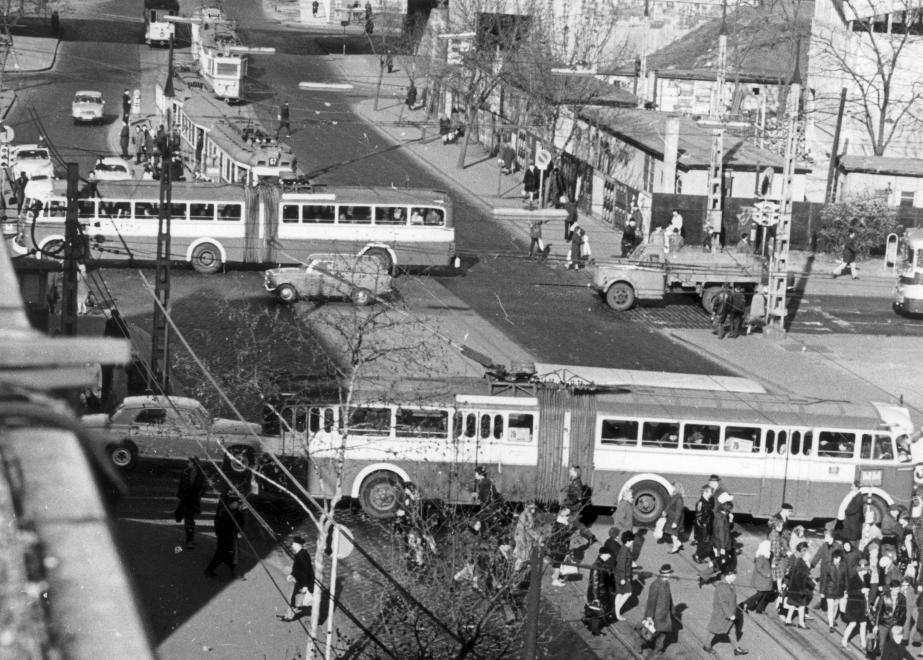
The intersection of Hungária Boulevard and Thököly Road in 1967 (Photo: Fortepan/Image No.: 24055)
However, as early as 1971, another idea was discussed. The proposal submitted to the Executive Committee of the Budapest Socialist Council on 31 March 1971, which describes the manner and schedule of the construction of Hungária Boulevard in detail, also raised the possibility of a motorway ring to run outside Budapest. True, this is not mentioned in the proposal as an alternative to the Budapest motorway ring but as an independent investment.
Designing this motorway, today's M0, further away from the centre of Budapest, also started in 1974. By the end of the decade, Budapest's transport ideas had changed, and only this motorway farther from the city's inner areas was included in the 1978 transport development plan. The plans for the motorway on Hungária Boulevard was omitted. It was built as a main urban road and completed in 1995.
Cover photo: Rákóczi Road as seen from Baross Square in 1972 (Photo: Fortepan/Image No.: 87795)

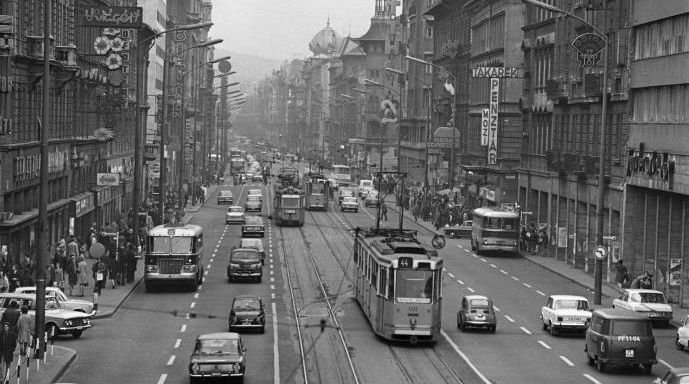



































Hozzászólások
Log in or register to comment!
Login Registration